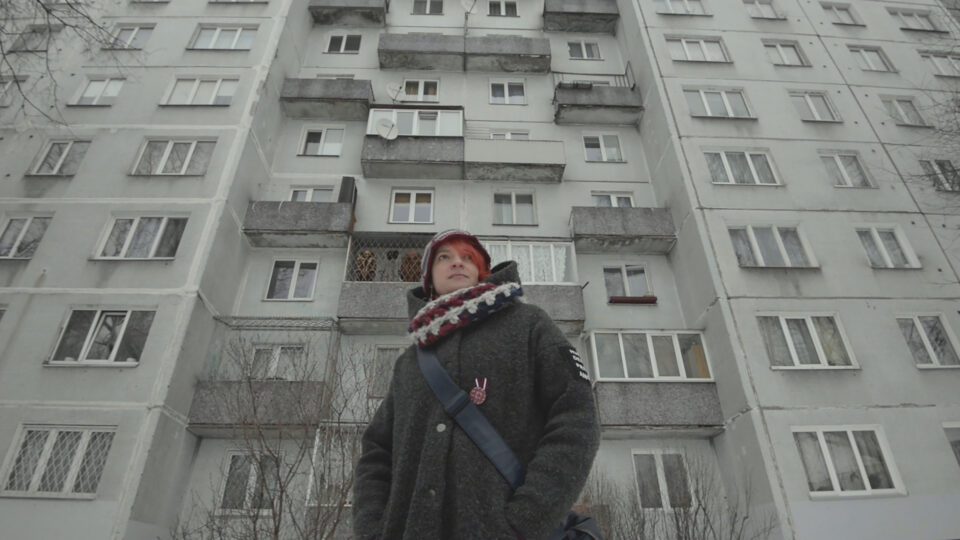Sigita Silina is a visual artist with a focus on socio-cultural nuances. She merges art, science, and philosophy, inviting viewers to discover the interplay between art and human consciousness. Liminal Potential surveys the profound implications of Artificial Intelligence (AI) and its impact on humanity. Through AI-generated poetry and insightful commentary, the work explores the delicate balance between humankind’s intellect and AI’s exponential growth. It raises thought-provoking questions about the consequences of excessive reliance on AI, highlighting concerns about dehumanisation, loss of privacy and the erosion of human connection. We asked the Aesthetica Art Prize shortlisted artist about the thoughts behind her project and how the visual language of Liminal Potential could be interpreted.

A: Could you please tell us what inspired Liminal Potential?
SS: I came across a book by Israeli author Yuval Harari called Homo Deus: A Brief History of Tomorrow, which I found fascinating in many ways. Harari believes that humans will eventually merge with technologies and evolve into a new species – transhumans. He further suggests that we will discover alternative and new ways to achieve happiness by controlling the amount of serotonin in our brains, and gene editing will enable us to live forever, and so on. This made me think about our human existence on this earth. Are we merely a collection of cells that, when stimulated and enhanced in certain ways, can truly make us the best version of ourselves? This raised bigger questions about what it means to be human.
A: Why did you choose this format of film to make the artwork? What was the idea behind the scenery, edits and the various storylines?
SS: I personally believe that film is probably the best format for artwork. It is such a rich medium to work with. You can include everything: still image, video, sound, music… You can document, create fictional stories or mix up all together. It’s pretty much like life as we perceive it. As Soviet Russian film director Andrey Tarkovsky said, “Life doesn’t unfold chronologically before our eyes.” Our daily experiences are interwoven with dreams and imaginations, and we often daydream whilst we perform daily tasks. Therefore, I feel that these little storylines, random locations, and the mix of documentary style with a touch of surrealism represent life itself. It felt like the most realistic way to portray the human condition.
A: How did you choose the different characters and locations that appear in the video?
SS: I love placing my characters in interesting locations. Fortunately, I often come across great places that could serve as settings for video or still images, so I always have these in my mind. Depending on what each character had to say, I selected a suitable setting for them. For instance, when Liyun talks about the future of AI, I felt it appropriate to place him in an urban environment where his human form contrasts with concrete structures. The instant I saw locations, they inspired me to create something in them.
A: How does being an artist affect the way we see the world?
SS: How does a non-artist perceive the world? Do they observe it similarly to an artist but simply refrain from creating art? Perhaps we artists are more emotional. Emotions are completely subjective experience. I believe all individuals are extraordinary and possess some creative spark within them. However, we artists have first this immense desire to show, to tell others about whatever extraordinary experience we had and we creatively craft our artwork to entangle our audiences in that ambient we personally encountered. Using our creative tools, we try to deliver to the public our personal subjective experience. Through our craft, we invite others to see what we witnessed. The beauty lies in the fact that everyone interprets it differently, adding alternative dimensions to it. Whilst no one can truly experience another person’s subjective journey, this mystery is an enchanting part of life’s overall magic.

A: Could you name some artists who inspire your work?
SS: I admire the work of Andrey Tarkovsky. Even though he created movies, I perceive these more as artworks. His profound understanding of how humans perceive the world and experience life is truly remarkable. Inspiration, for me, doesn’t always come from fellow artists. While I may admire the work of certain creative figures, I find that true inspiration doesn’t necessarily stem from observing others’ artwork. When I look at someone else’s project, I truly immerse in their work and enjoy, and explore where it takes me. But my most profound inspiration comes from everyday experiences. The emotions felt in daily life situations, such as the play of winter sunlight casting shadows on the wall or the movement of fast-paced clouds. Paying attention to these simple details inspires me to contemplate big questions about life.
A: What does being shortlisted for the Aesthetica Art Prize mean to you?
SS: Firstly, it’s an immense honour to be shortlisted for the Aesthetica Art Prize, and having the possibility to showcase my work. I feel like I have taken a significant step forward. During the creation of Liminal Potential, there was a point when I faced a challenging time, questioning whether I should continue making art at all. Now, being named a finalist for the Aesthetica Art Prize is an incredibly gratifying experience. It has renewed my motivation, and I am determined to continue creating more art.
Silina features in the Aesthetica Art Prize 2024 Exhibition at York Art Gallery from 16 February – 21 April. Plus, meet over 250 longlisted international artists in our new online gallery.
Want to get involved? The next edition of the Prize is open for entries. Submit your work by 31 August. Win £10,000, exhibition and publication. Find out more here.
All images: Sigita Silina. Still from Liminal Potential (2023). Single channel digital video, 10 min 27 sec.





